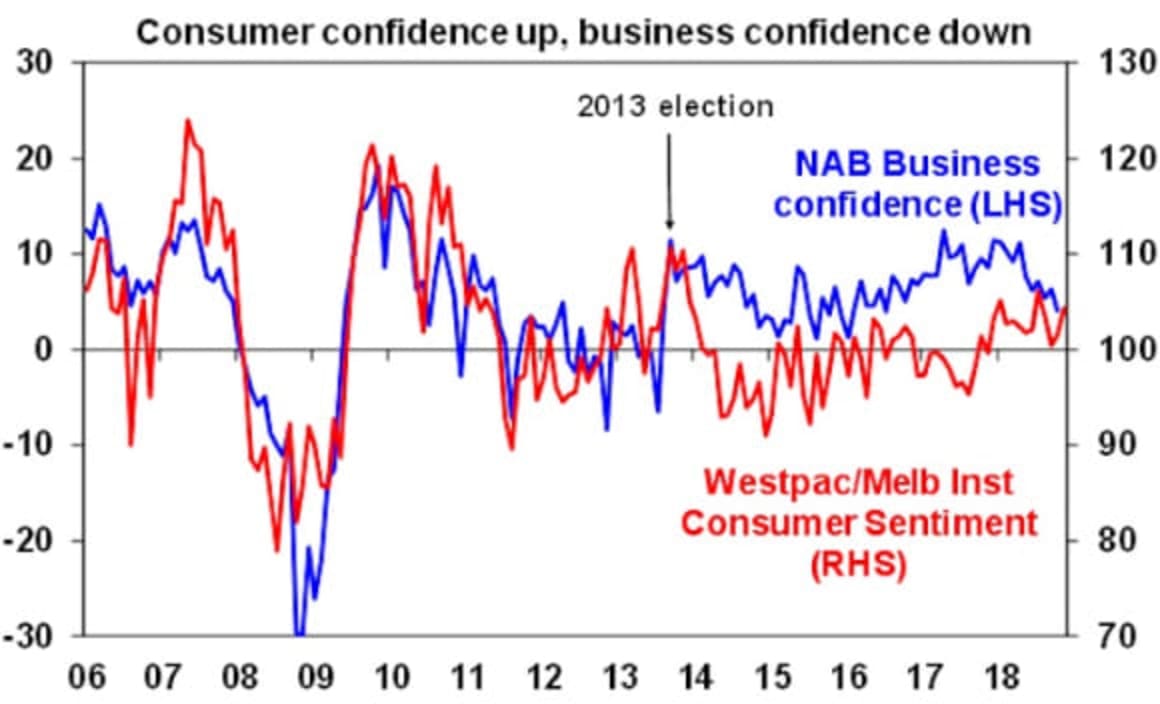Consumer confidence up but business confidence down: Shane Oliver

EXPERT OBSERVATION
The good news is that wages growth has continued to lift from its 2016 low point of 1.9% year on year. However, the lift in wages growth largely owes to a faster increase in the minimum wage for 2017-18 of 3.3% which was up from 2.4% for the previous year and now to a rise of 3.5% for this financial year. Were it not for the acceleration in minimum wage increases, wages growth would still be running at around 2%, so there is still little evidence of significant pick up in underlying wages growth.
Fortunately at least the uptick in wages growth to 2.3% when inflation is just 1.9% means that real wages growth is at least positive. That said at 0.4% year on year real wage growth is still very small and won’t provide much of a boost to consumer spending.
Click here to enlarge

Source: ABS, AMP Capital
Falling unemployment should help contribute to a pick-up in wages growth but with the level of unemployment and underemployment remaining very high at 13.3% it’s still hard to see a significant acceleration in wages growth. To get wages growth up to a more reasonable 4% probably requires labour market underutilisation to fall to around 10% at least.
Click here to enlarge

Source: ABS, AMP Capital
In other data released today, consumer confidence for November rose 2.8%, with news of lower unemployment and falling petrol prices possibly offsetting news of falling home prices. It’s still stuck in the same range it’s been in all year though. Against this the NAB business survey showed a slight fall in business confidence in October, with both consumer and business confidence running around similar levels which are around or a bit above long term averages.
Click here to enlarge

Source: NAB, Westpac/MI, AMP Capital
Implications
While it’s good to see wages growth up from its lows two years ago, beyond an acceleration in the minimum wage, which affects about 20% of the workforce, we are yet to see a meaningful pick up in underlying wages growth. This is a drag for consumer spending and will help keep inflation stuck around the low end of the 2-3% inflation target.
As result we remain of the view that the RBA won’t start raising interest rates until 2020 at the earliest and given the housing related downturn there is a significant chance that the next move could turn out to be a rate cut – although this would be unlikely before second half next year as it will take a while to change the RBA’s relatively upbeat thinking on the economy and rates.
With the Fed hiking and the RBA on hold (or maybe even cutting at some point) the Australian dollar still has more downside.
SHANE OLIVER is head of investment strategy and economics and chief economist at AMP Capital and is responsible for AMP Capital's diversified investment funds.